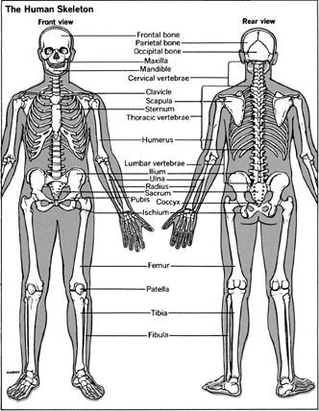The human body, a marvel of biological engineering, is supported by a framework of 206 bones, collectively known as the skeleton. This number, however, is not constant throughout a person’s life. At birth, humans have approximately 270 bones, many of which fuse together as they grow, resulting in the 206 bones found in the adult human body.
The human skeleton can be divided into two main parts: the axial skeleton and the appendicular skeleton. The axial skeleton, consisting of 80 bones, forms the central core of the body and includes the skull, spine, and chest. The appendicular skeleton, comprising 126 bones, includes the arms, legs, and the pelvic and pectoral girdles.
The skull, a complex structure, houses the brain and sensory organs. It consists of 22 bones, including 8 cranial bones and 14 facial bones. The spine, or vertebral column, is made up of 26 bones in adults, though children have 33. These bones provide support and flexibility, allowing us to stand upright and move.
The chest, or thorax, contains 25 bones, including the sternum and 24 ribs. These bones protect vital organs such as the heart and lungs. The pectoral girdle, consisting of the clavicle and scapula, connects the upper limbs to the body. The upper limbs include the humerus, radius, ulna, carpals, metacarpals, and phalanges.
The pelvic girdle, composed of the hip bones, connects the lower limbs to the body. The lower limbs include the femur, tibia, fibula, patella, tarsals, metatarsals, and phalanges.
It’s important to note that the number of bones can vary among individuals due to anatomical variations. For instance, some people may have extra cervical ribs or lumbar vertebrae. Additionally, certain bones, known as sesamoid bones, develop within tendons, mainly in the hands and feet.
In conclusion, the human skeleton, with its 206 bones, serves multiple functions, including support, movement, protection, blood cell production, calcium storage, and endocrine regulation. Despite its rigid appearance, the skeleton is a dynamic structure, constantly reshaping itself in response to physical stress and hormonal changes. Understanding the intricacies of our skeletal system is not only fascinating but also crucial for fields like medicine, anthropology, and forensic science.



